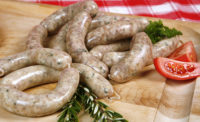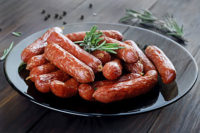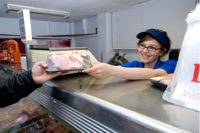A new view of profit, with casings and nettings
Casings and nettings systems take advantage of processors’ desires for improved total cost of ownership.

Recently, a more disciplined view of profit has emerged within the meat industry, brought on by the havoc of the so-called “great recession” and historically high meat costs.
Perhaps two negatives can make a positive because together they forced a big profit conversation that left inspired thinkers to conclude that it is not just about volume anymore. Along with this revelation, processors also determined that suppliers can actually impact their success, too. Now the question posed to every supplier of packaging and packaging equipment is, “How can you help to lower my total cost of ownership?”
No longer is it just about the lowest invoice price. Total cost of ownership is driving innovation, according to a longtime packaging executive. And right now where can lowering the total cost of ownership be most effective? To paraphrase the old real estate axiom: yield, yield, yield!
Here is where fractions evolve into large numbers. That same executive pointed out that a few tenths of a percent improvement in yield can mean literally millions of dollars in added profits for some processors.
Casings suppliers are focusing their innovation efforts directly at affecting processors’ yields, targeting vital areas such as reducing rework, increasing throughput and reducing labor.
This past May at IFFA, a leading international meat industry trade show for processing, packaging and sales, a handful of exhibitors featured alginate gel in-line coex systems that literally extrude the casing onto the meat. This creates a big advantage over buying premade casings, and its effect on the total cost of ownership could be significant. Smoke- and flavor-transfer casings are adding efficiency and savings to processing meats, as well.
More and more the industry looks to automate as much as possible. Peeling off casings and netting are still labor-intensive processes in many places, but with the right equipment, pre-release casings, and easy-peel netting, processors can create meaningful ergonomic and food-safety benefits. The materials may not be cheaper, but overall manufacturing costs can be reduced.
Today’s leading-edge automated packaging systems stress flexibility. They are able to run shirred casings, roll-stock film and nets. In many instances, the materials savings they generate on a per-unit basis alone can help shorten the systems’ payback period.
At least one casing and netting packaging systems company is addressing greater product consistency for large whole-muscle cuts by literally pressing the products and changing their shape. Cooking and slicing yields are improved immediately because the products have more uniformity and diameter consistency.
Historically, the discussion of yield was focused internally. But now processors are going to suppliers and looking for their help in achieving improvements. Even operations are engaged more and more in buying decisions.
In the new normal, improving the total cost of ownership has become everyone’s concern.
Looking for a reprint of this article?
From high-res PDFs to custom plaques, order your copy today!







